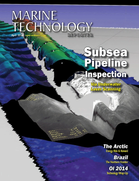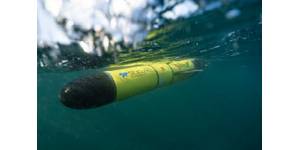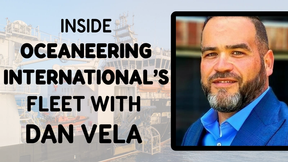MTR April 2014: Editor's Note
By Greg Trauthwein, Editor & Associate Publisher
While the Offshore Oil & Gas markets continue to push further from shore in ever-deeper waters, the need for proven technology to work more efficiently in increasingly hostile and unfamiliar environments grows in tandem. And while growth in the energy sector continues to energize multiple markets, it is worthy to note that there are a few looming clouds on the horizon of this traditionally cyclical market.
Jim McCaul of IMA has been a close friend and colleague for nearly 20 years, as he has served as “Editorial Consultant” on MTR sister-publication Maritime Reporter & Engineering News for decades. McCaul arguably has more insight and information on the Floating Production System market than anyone I know, as he has studied it meticulously – and generated C-Suite level quarterly market reports on the topic – for the last 20 years. As you know, these floating production system projects are multi-year, multi-billion dollar projects, and they can serve as a bellwether for the general overall health of the market. Today there are 320 oil and gas floating production units in service, on order or available for re-use in another field, with FPSOs accounting for 65% of the existing systems and 74% of the systems on order. While the number of production floaters in service has increased 84% over the past 10 years, McCaul notes in his latest monthly report for MR that the order projection for the coming five years is from 104 to 150 production floaters, which at face value seems strong but is significantly lower than the five-year forecast from last year of 124 to 190 units. Why the big drop?
First and foremost, there are increasingly evident strains on the deepwater supply chain, as costs for projects, people and equipment grow exponentially, in tandem with project complexity. Predictably, oil major capex budgets are starting to shrink, with ExxonMobil saying its capex spending for 2014 will be 6% less than last year, and Chevron cutting 2014 spending 5%. In addition, the rapid evolution of the U.S. shale oil and gas business is a growing factor, as oil companies are increasingly looking at faster, cheaper to develop projects on land as an alternative. For now offshore remains a strong growth market, but as you enter into long-range planning later in the year, pay heed to the clouds forming on the offshore horizon.
(As published in the April 2014 edition of Marine Technology Reporter - www.seadiscovery.com)



 August 2025
August 2025



